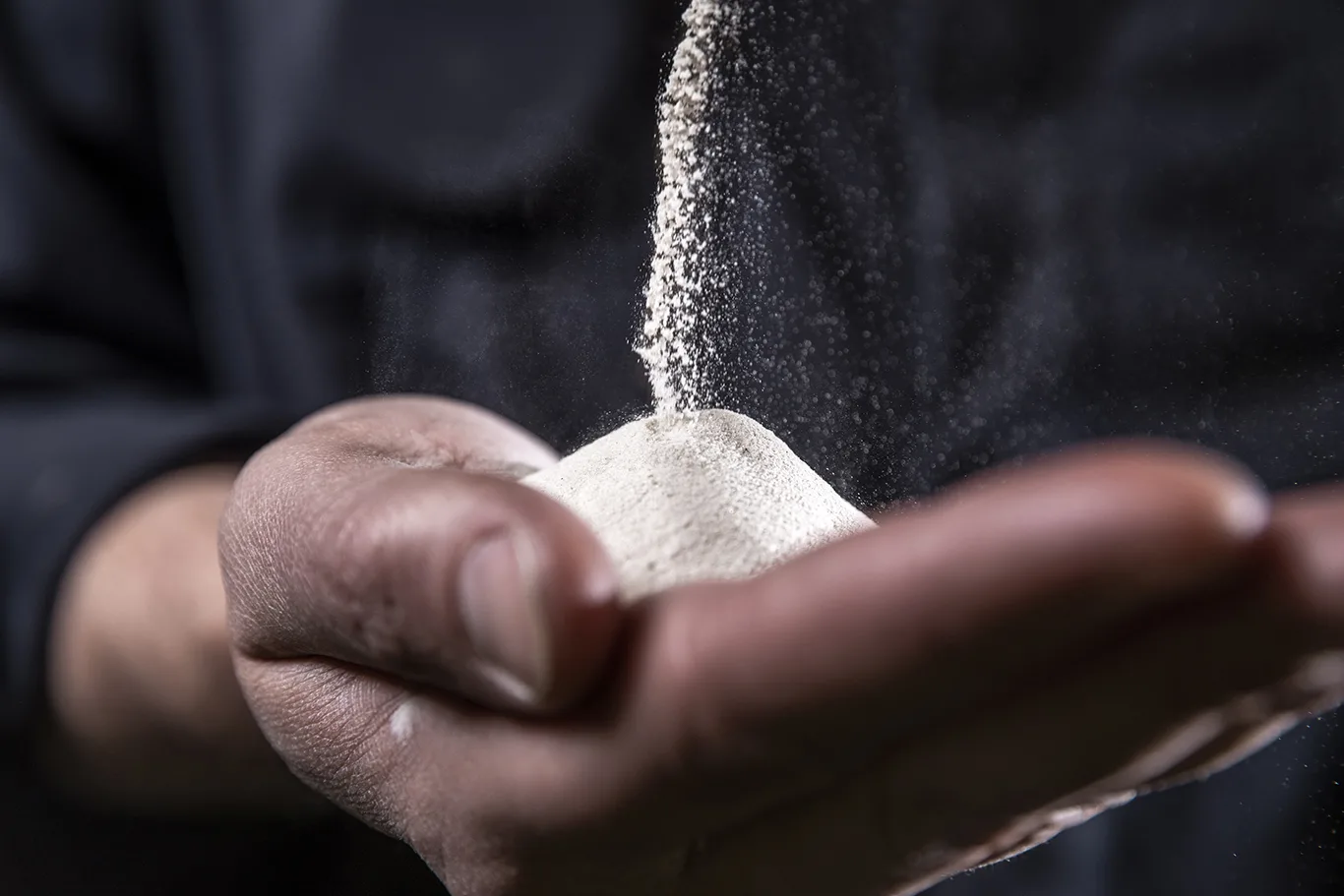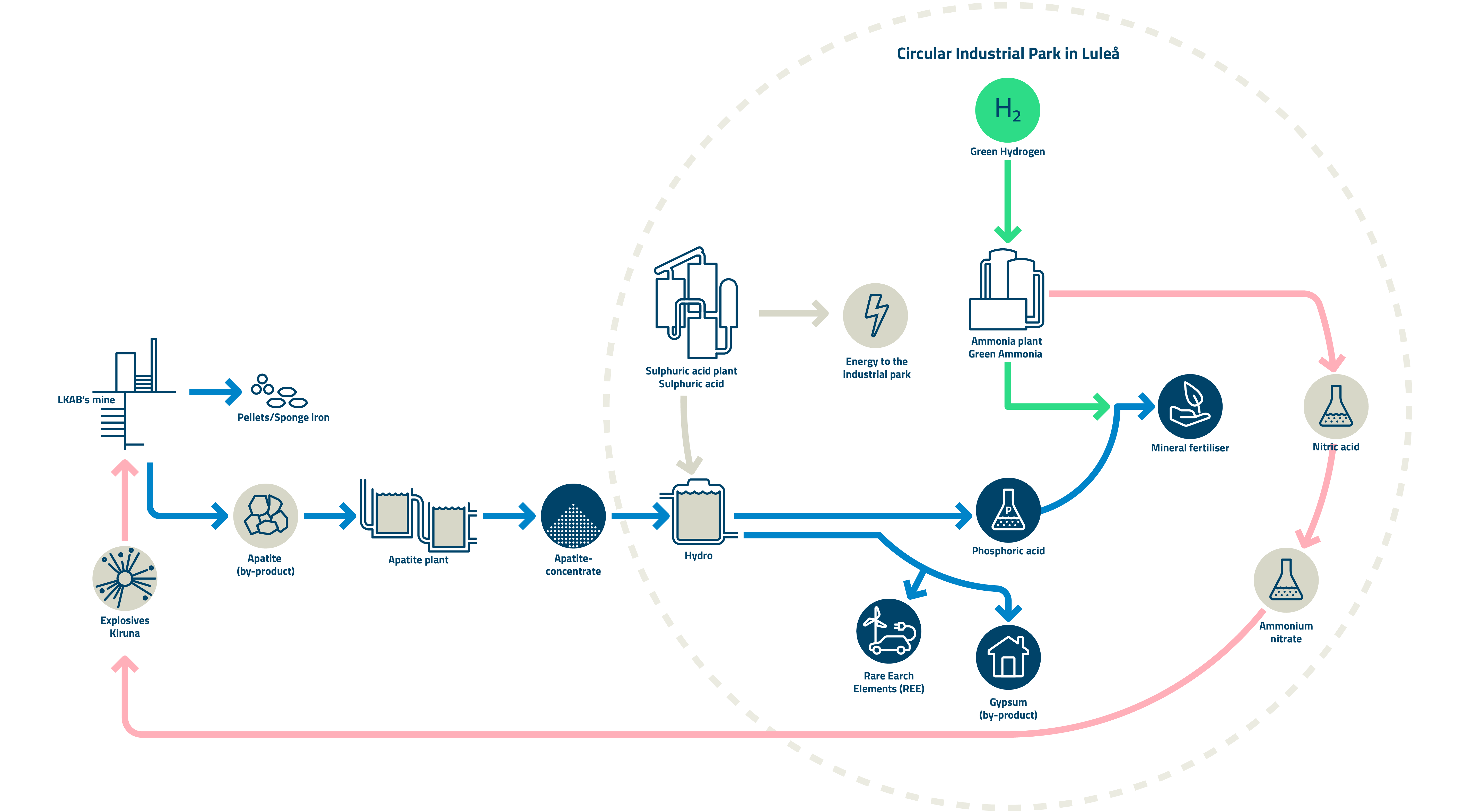
How it works
Our vision is to produce critical raw materials that improve resource efficiency and reduce emissions is by using a raw material that is recycled and also, producing our own input materials such as sulphuric acid, hydrogen and ammonia through electrified processes powered by renewable energy.
Apatite production in Northern Sweden
The first step in the conversion of mine waste into critical raw materials is to produce an apatite concentrate.
We plan the process in such a way that we recover the tailings sand from the iron ore processing plants before deposition in the tailings ponds. For this reason, we must place the apatite plants directly adjacent to LKAB’s existing iron ore production facilities in Northern Sweden.

LKAB’s Circular Industrial Park
The apatite concentrate will be transported via rail to the industrial park located on the coast in Luleå, Sweden, where it will be further processed.
At the apatite is dissolved with hydrochloric acid to create a pure phosphorus product and separate rare earth elements (REE’s). Phosphorus is then processed with ammonia to mineral (phosphate) fertiliser. Hydrochloric acid is regenerated with the aid of sulphuric acid and produces gypsum.

